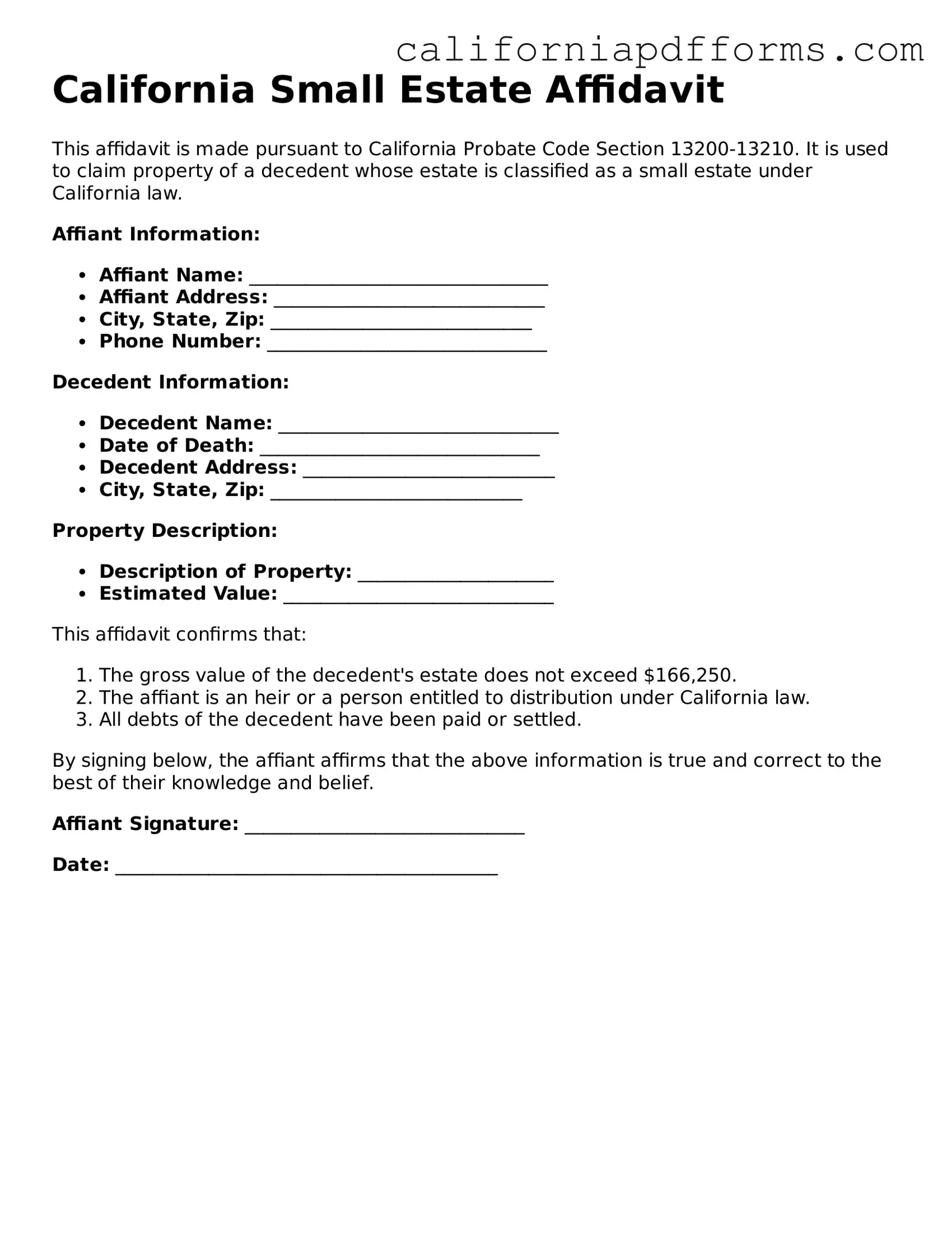What is a California Small Estate Affidavit?
The California Small Estate Affidavit is a legal document that allows individuals to transfer property of a deceased person without going through the formal probate process. This affidavit can be used when the total value of the deceased's assets is below a certain threshold, which is currently set at $166,250. It simplifies the process for heirs and beneficiaries, allowing them to claim assets directly from financial institutions or other entities holding the deceased's property.
Who is eligible to use the Small Estate Affidavit?
Eligibility to use the Small Estate Affidavit is generally limited to the following individuals:
-
Heirs or beneficiaries named in the deceased's will.
-
Individuals who would inherit under California intestacy laws if there is no will.
-
People who are at least 18 years old.
Additionally, the estate must not include real property, or if it does, the total value of the estate must still fall below the specified threshold. It is essential to ensure all criteria are met before proceeding with this affidavit.
How do I complete the Small Estate Affidavit?
Completing the Small Estate Affidavit involves several steps:
-
Obtain the appropriate form, which can be found on the California courts website or through legal document providers.
-
Fill out the form with accurate information about the deceased, including their name, date of death, and a description of the assets.
-
Gather supporting documents, such as a copy of the death certificate and any relevant financial statements.
-
Sign the affidavit in front of a notary public to ensure its validity.
Once completed, the affidavit can be presented to banks or other institutions holding the deceased's assets for transfer.
What happens after submitting the Small Estate Affidavit?
After submitting the Small Estate Affidavit, the financial institutions or entities holding the assets will review the document. They may request additional information or documentation. If everything is in order, the institution will transfer the assets to the heirs or beneficiaries as specified in the affidavit. It is important to follow up with these institutions to ensure the process is completed. If there are any disputes or complications, it may be necessary to seek legal assistance to resolve the issues.
